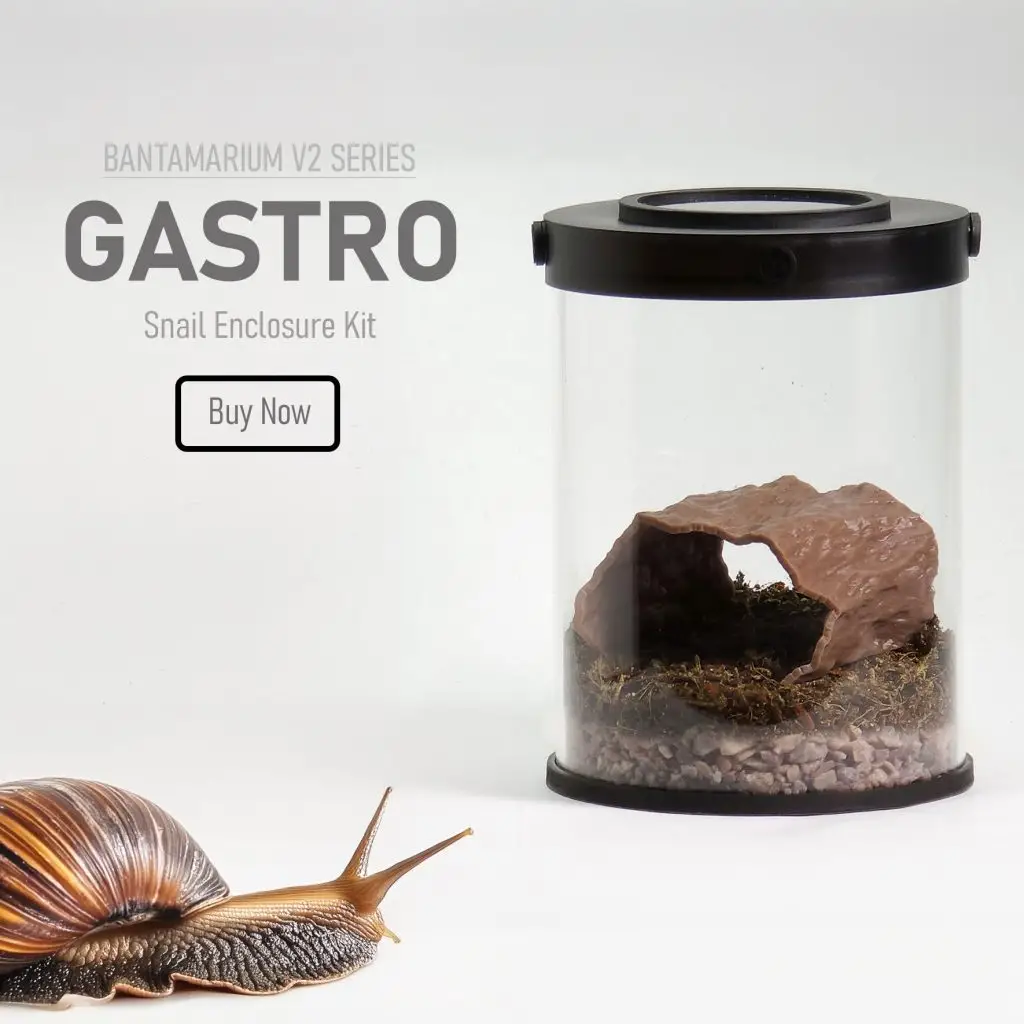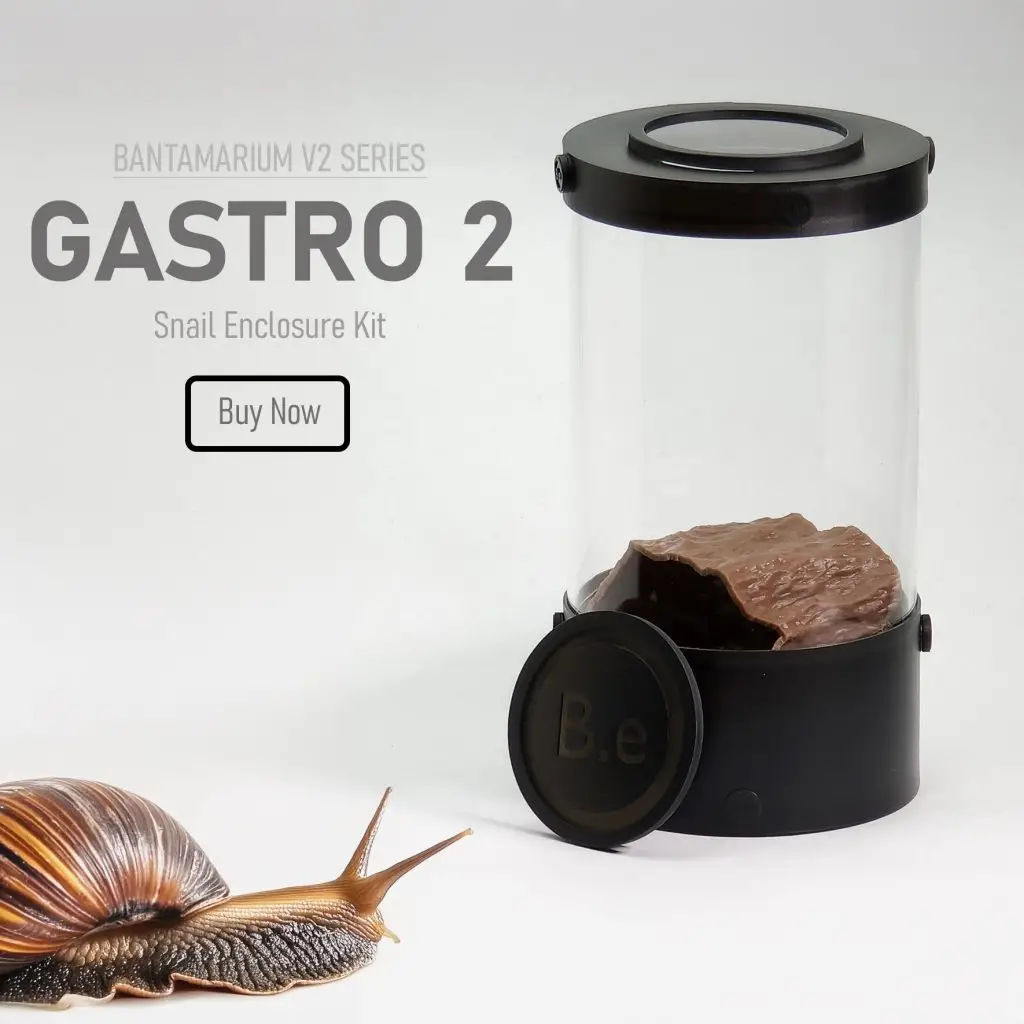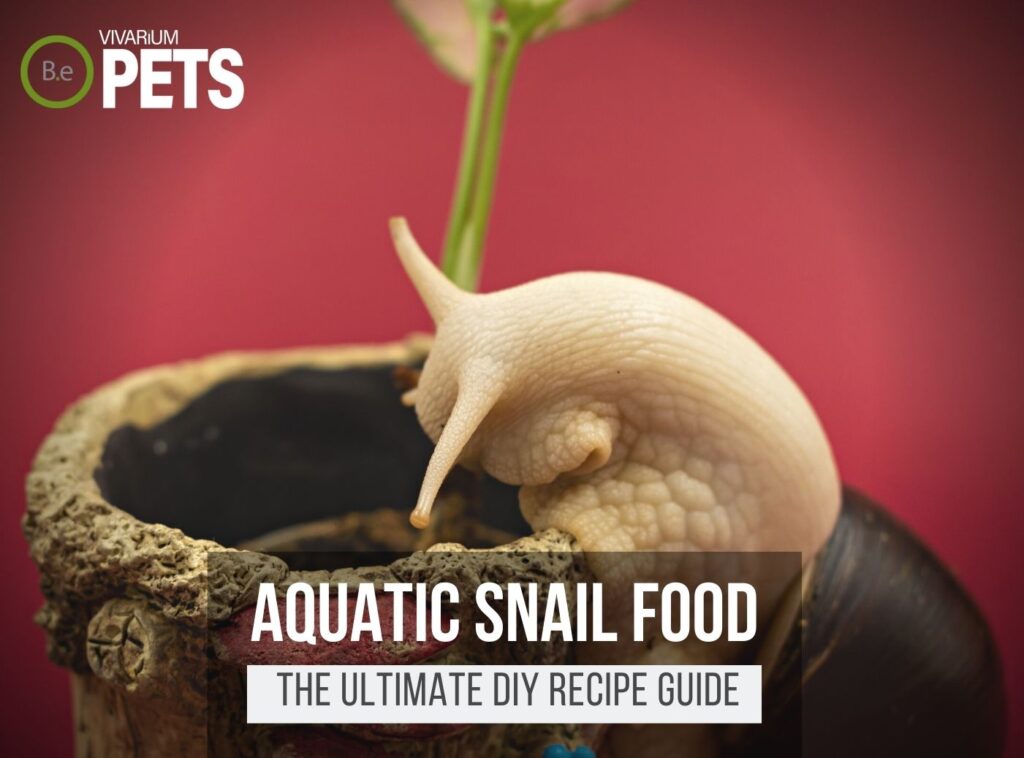Of all the aquarium snails we’ve covered so far, The Ramshorn Snail (Planorbarius corneus) is one of the most prehistoric-looking snails you can own!
P. corneus are fascinating members of the freshwater aquatic community, and compared to most gastropods, their care involves a few key considerations for optimum tank conditions.
In this guide, we’ll explore the basic information about Ramshorn snails, the various benefits they offer, and a few tips and tricks on how to best care for them.
Whether you’re an experienced aquarium keeper or just getting started, this article will provide helpful instructions on caring for the unique snails.
Table Of Contents:
ToggleWhat Are Ramshorn Snails?
Ramshorn Snails are a type of aquatic snail found in freshwater environments all over the world.
They are named after their tightly coiled shell shape resembling a ram’s horn.
This species of snail is part of the family of Planorbidae, a group of snails with both aquatic and terrestrial species inhabiting different parts of the world.
Ramshorn Snails are hardy and relatively easy to care for, making them a popular choice amongst freshwater aquarium keepers.
Create an ideal habitat for your pet snails with our Customizable Snail Enclosure Kits, which include everything you need to get started.
What Do Ramshorn Snails Look Like?
Planorbarius corneus are small creatures, with adults typically no larger than 1 inch in size.
Ramshorn snails are named for their distinctive shell shape, which is helical in appearance and may feature lines or a patterned mottling.
The shells can take on a variety of colors, from brown to red or yellow, to light blue or purple.
Ramshorn snails also have two tentacles that feature eyes at the end, and a foot for locomotion.
Benefits Of Using Ramshorn Snails
Ramshorn snails are beneficial tank inhabitants in several ways.
For one, they work hard to keep the tank clean by eating algae and any uneaten food that settles to the bottom.
Additionally, their waste adds much-needed nutrients to the water, which helps to promote plant growth.
They can also actively help the oxygen cycle. As filter-feeders, Ramshorn snails use the water to extract oxygen, which adds to the overall tank environment.
Lastly, their sociable personalities help to socialize with other tank mates as well as provide adequate entertainment for their aquarium keepers.


Ramshorn Snail Facts
Ramshorn Snails are beloved members of the freshwater aquatic community due to their small size and diverse diet.
They are gentle by nature and subsist mostly on algae, which makes them great algae eaters.
With a lifespan of around a year, they can quickly reproduce under the right care and conditions, making them easy additions to any aquatic vivarium.
Habitat
Planorbarius corneus are members of the Planorbidae family and are named for the spiral shape of their shells.
While the exact origins and species of these snails are unknown, many believe they have been around for millions of years.
They have a widespread distribution and can be found in ponds, lakes, rivers, and other freshwater habitats in most temperate climates.
They are a hardy species that can tolerate a range of water conditions, although they do best in soft, basic water with a pH between 7 and 8 and temperatures between 18 and 26°C.
Diet
Ramshorn snails are often found in pristine freshwater sources, where they feed on algae, bacteria, and other decaying organic matter.
The snails’ diet consists mainly of detritus, which is broken-down plant and animal material.
Algae can provide important nutrition to snails, and because of this, they are known as great “algae eaters”.
They will also scavenge on dead or dying plant material or fish waste, as well as eat broken-down plant material (such as leaves and moss).
In the wild, Ramshorn snails have been known to feed on insect larvae as well.
Temperament
Planorbarius corneus are peaceful, gentle creatures that can be around humans and other animals without causing any harm.
In the wild, these snails are generally reclusive and avoid contact with larger or more active animals.
However, when kept in an aquarium, Ramshorn snails can become rather bold and even friendly with their tank mates.
If kept in an adequate environment with other compatible species, Ramshorn snails will show signs of curiosity and even exploration when sorting through their tank environment.
Overall, Ramshorn snails are quite non-aggressive and timid creatures that are well-suited to most environments.
Lifespan
Ramshorn snails have a lifespan of up to one year. However, their life cycle is a bit more complex and can take up to four months.
The life cycle begins with a male and female Ramshorn snail mating.
The result of the mating is the female laying eggs, which can be either released into the water or attached to plants or surfaces.
After hatching, the young snails look like miniature adults and can feed on algae and detritus right away.
As the young snails reach maturity, they will begin to reproduce and the cycle continues.
You may notice a decrease in the number of snails over time due to natural causes such as predation, disease, or lack of food.
Breeding
Ramshorn snails, like most other snails, mate and reproduce through sexual reproduction.
This usually occurs during the night or in the early hours of the morning.
When mating, Planorbarius corneus will come together and one snail will insert its mating tube into the other’s genital area.
After this interchange has occurred, the snails will part and the snail which received the tube will lay its eggs in the water 10-14 days later.
The laying of the eggs may occur either on the substrate or on aquatic plants in an aquarium.
Ramshorn snails are producers of both male and female reproductive cells, but typically up to 8 snails are needed for successful mating.
Given the right conditions, these adult Ramshorn Snails can lay eggs of their own within a couple of months.
Where To Find Ramshorn Snails
Finding Ramshorn Snails in the wild is relatively easy, as they are found all over the world in all fresh waters, ranging from slow-flowing rivers to fast-moving streams and even large lakes.
Ramshorn snails can also often be found along the edge of garden ponds or even in rainwater barrels.
If you’d like to buy Ramshorn Snails, they can often be found at local pet stores or even online, depending on where you live.
Ramshorn snails can be purchased singularly or in groups, which I recommend as they are social snails.
Ramshorn Snail Care
Caring for Ramshorn snails involves setting up a suitable tank, ensuring the correct water parameters, providing a varied diet, and monitoring for any potential diseases.
Additionally, regular maintenance and cleaning of the tank must be performed to keep the water quality high and the tank habitable for the long term.
Tank Requirements
Ramshorn Snails are very versatile and can adapt to a wide variety of tank conditions.
The ideal tank for Planorbarius corneus should have a pH of 6.0-8.0, a hardness of 8-10 dKH, a temperature of 64-77°F, a sandy substrate, and dim lighting.
The vivarium type should be an open-top fish tank with low oxygen levels, as Ramshorn Snails require very little aeration.
A well-planted tank is also beneficial for the snail’s health, as it provides a source of food and hiding spots.
Overall, it’s important to remember that Ramshorn Snails adapt well to a wide variety of tank conditions, so don’t be afraid to experiment to find the right setup for you and your snails.
What Do Ramshorn Snails Eat?
When it comes to feeding your Ramshorn Snails, it’s important to note that they are primarily herbivorous meaning they primarily feed on plant material.
You can feed them a variety of fresh, or commercially prepared foods such as algae tablets, vegetable-based sinking pellets, and or commercial algae wafers.
You can also feed them supplemental foods such as spinach, romaine lettuce, blanched broccoli stalks, and zucchini.
Additionally, you can mix in a variety of natural foods from your tank, including small pieces of soft algae, diatoms, and other soft plants.
Be sure not to overfeed them as this can cause unsafe levels of ammonia and nitrites in your tank.
If you’re more of an avid hobbyist like myself, be sure to check out my ultimate DIY aquatic snail food guide. I give a more in-depth explanation of the best foods and my favorite recipe.
Best Tankmates For Ramshorn Snails
Ramshorn Snails can be kept with a wide array of different tank mates and species.
Among the best tankmates for these snails are certain species of small fish, as well as shrimp and frogs.
The small fish, such as tetras and danios, provide good company for the Ramshorn Snails, while the shrimp and frogs can contribute to the tank’s cleanliness by feeding on algae.
They are also good choices for the overall balance of the tank, as they will not outcompete Planorbarius corneus for food.
Additionally, snails from other families of the gastropod family, such as great pond snails and Malaysian trumpet snails, are compatible with Ramshorn Snails and make great tankmates as they share similar tank conditions.
They also help to prevent algae buildup and help keep tank decorations and plants free of algae.
Conclusion
In conclusion, Ramshorn Snails make a wonderful addition to any freshwater tank.
They are excellent cleaners, oxygenating the water, and providing socialization for other tank mates. With the proper environment, diet, and care, Planorbarius corneus can live for up to a year.
We hope this care guide has helped you better understand the unique features and benefits that pet snails offer and the essential needs they have to thrive in your tank.
Create the ideal habitat for your snails with our species-specific soil mixes and Insect Enclosure Kits. These products provide everything you need for a successful and thriving snail habitat.
Frequently Asked Questions
Ramshorn snails can be both good and bad. They can help clean up aquariums but can also reproduce rapidly and overcrowd your tank. Their impact depends on the specific situation.
Ramshorn snails do not typically harm fish and can even benefit them, but their overpopulation can lead to resource depletion and poor water quality that can harm fish and other aquatic organisms in the tank.
Ramshorn snails can help clean a tank by consuming leftover food, decaying plant matter, algae, and other waste materials.
Their movement and grazing behavior can also help to stir up and aerate the substrate, which can promote a healthy environment for beneficial bacteria to thrive.
Ramshorn snails have a relatively fast reproductive rate and can reproduce quickly under optimal conditions.
They are hermaphroditic and can fertilize their own eggs or those of another snail, and their reproductive rate can vary depending on factors such as temperature, water quality, and food availability.
Even though ramshorn snails are not generally carriers of contagious diseases, it is still a good idea to observe new snails for signs of disease or stress before introducing them to other tank inhabitants.
If they are coming from another tank, it is always a good idea to rinse them off thoroughly.
Bettas can eat small snails, including ramshorn snails, especially if the snails are young or newly hatched. However, adult ramshorn snails are typically too large for bettas to consume, and may even become an annoyance to bettas by crawling on their fins or disturbing their nests.
Assassin snails are known for their ability to prey on other snail species, including ramshorn snails, and are sometimes used as a natural method of snail control in aquariums.
No, you should never release ramshorn snails into the wild as they have the potential to disrupt ecosystems and introduce new species to a certain area.
If you do not want to keep them, you can look for an aquarium that is willing to take them in.







